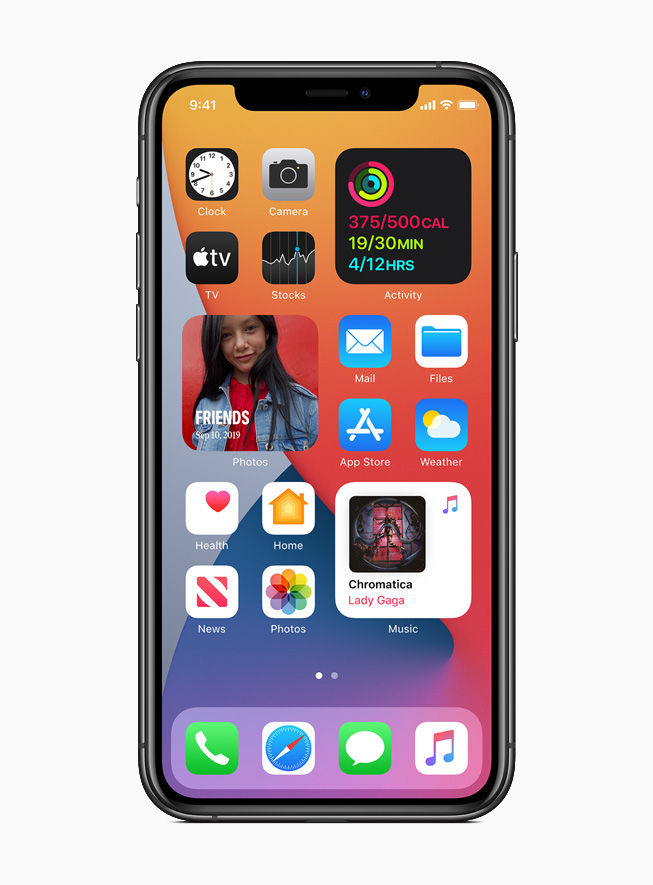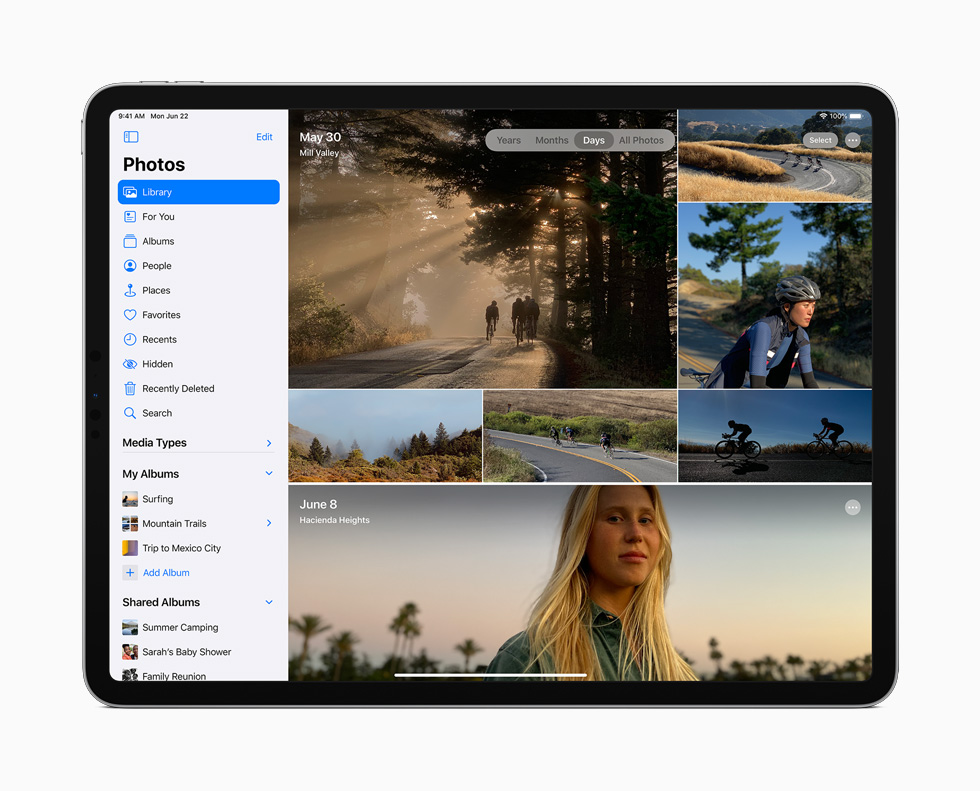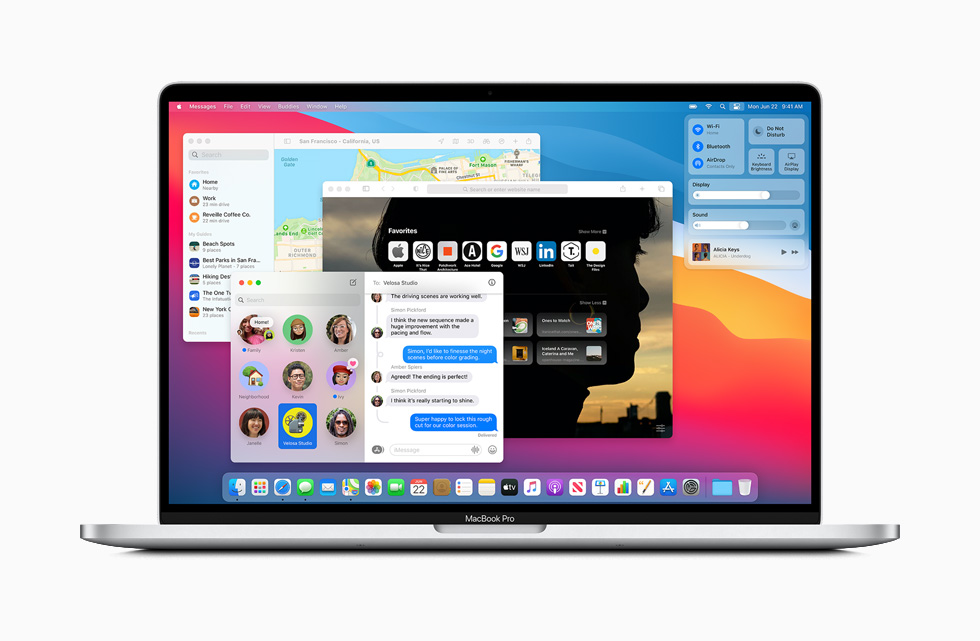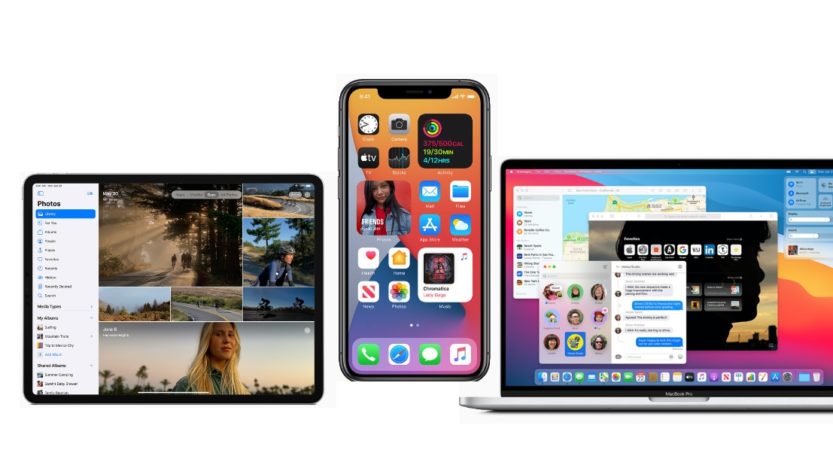Apple’s annual developer conference took place yesterday as an online-only event. The Cupertino based company announced new software versions for its iPhones, iPads, Macs and other devices. Apple also revealed that it will be switching to its custom ARM-based chipset from Intel for its future computing machines.
Apple announced a slew of new features and interface changes for its upcoming iOS 14, iPad OS and macOS Big Sur. Let’s take a look at all the announcements from WWDC 2020.

iOS 14:
Apple’s next operating system i.e. the iOS 14 comes with a ton of new features and interface changes. Here are some of them below:
- iOS 14 comes with an app drawer called ‘App Library’ that categorizes all the apps and highlights the most used ones. The feature shows up when the user swipes past the available home screens.
- Widgets can now be pinned on the home screen alongside the app icons instead of ‘Today’s View’ section.
- The upcoming software version will bring Picture-in-picture feature allowing users to continue video playback in a small window while using other apps.
- Apple has introduced a new translation app called Translate much like Google Translate.
- The Siri interface has been revamped and it no longer takes fullscreen when using the voice assistant. It will only appear at the bottom of the screen with an animated icon.
- Apple has upgraded its Messages app with new Memojis, mention feature (similar to WhatsApp) and interface for group texts.
- With iOS 14, Apple has added the ability to turn your iPhone into a car key via CarPlay. The new feature allows NFC based keys to be stored on your phone enabling users to unlock the car. The 2021 BMW-5 series releasing next month will be the first car to support Apple’s digital car key feature.
- Lastly, Apple has added a new App Clips feature allowing users to try an app before actually downloading it. Clips can be triggered by NFC, QR codes or Safari/messages.
Apple’s iOS 14 will be available for devices launched as early as 2015 starting with the iPhone 6s. This means that current devices running on iOS 13 will support iOS 14. The list of compatible devices that will receive the upcoming software version include iPhone 11, iPhone 11 Pro, iPhone 11 Pro Max, iPhone XS, iPhone XS Max, iPhone XR, iPhone X, iPhone 8, iPhone 8 Plus, iPhone 7, iPhone 7 Plus, iPhone 6s, iPhone 6s Plus, iPhone SE (1st generation), iPhone SE (2nd generation), and iPod touch (7th generation)
Apple says that developers will get access to the iOS 14 from today. It will be available for public beta from next month and released later this fall.

iPadOS 14, watchOS and AirPods:
Beginning with the iPadOS, the next version also gets most of the major updates in iOS 14 like groups in Messages, additional Memojis, quick-to-download App Clips, cycling directions in Maps and a condensed Siri interface. The iPadOS 14 brings sidebars and toolbars to Apple’s first-party apps like Photos, Music and Notes. It introduces a universal Search feature that can now dig deeper into the apps and web. Apple has made improvements to Apple Pencil that lets users to write in any text field and it will automatically be converted to a typed text. Users can also draw shapes that will be made geometrically perfect with Shape recognition feature.
As for watchOS, Apple has introduced sleep tracking feature. Users can also share their watch face setup with others. The watchOS 7 also comes with handwashing detection using the accelerometer that detects for relevant motions and audio from the running water.
Apple has updated its AirPods that can now automatically switch between multiple devices. The AirPods Pro get Spatial Audio feature that introduce 3D surround sound-like experience.

macOS Big Sur:
Apple is moving from macOS X (or macOS 10) to macOS 11 after nearly two decades. The next software version of Apple’s computing devices is named ‘Big Sur’. The macOS Big Sur will come with design tweaks to its UI. Big Sur borrows the Control Center and Notification Center from iOS. There is also a new version of Maps on macOS with support for in-door maps, guides, favourite locations etc.

New processors for future Macs:
As previously rumoured, Apple’s next-generation Macs will be powered by the company’s custom ARM-based chipsets developed in-house. The Cupertino-based brand already makes the processors for its iPhones, iPads and Watch. Until now, Apple has used Intel’s chipsets in its Mac notebooks and iMacs. The transition from Intel to custom SoC is aimed at delivering more performance while using less power. It will also create a seamless ecosystem with macOS supporting native iOS and iPadOS apps.
Apple didn’t announce the specifics of its custom chipset. The company said that it will take two years to fully transition all Mac desktops and laptops to the new architecture. Apple added that Intel-based Macs are not outdated and they are still in pipeline. The company has already made its Final Cut Pro software compatible with the new Apple chips and macOS Big Sur while Microsoft and Adobe are working on updating their products. Apple said that it will make it easy for developers to port their apps.

